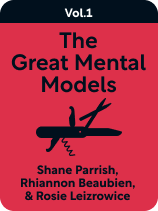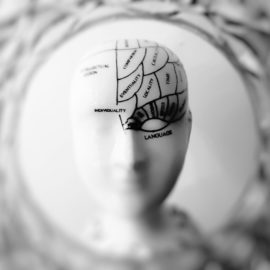

This article is an excerpt from the Shortform book guide to "The Great Mental Models Volume 1" by Shane Parrish and Rhiannon Beaubien. Shortform has the world's best summaries and analyses of books you should be reading.
Like this article? Sign up for a free trial here.
What are mental models? Can they actually help you in life in a practical way?
In our unpredictable and competitive world, your ability to make good decisions has an exceptional impact on your success in life and work. Fortunately, you can become a skilled decision maker by using mental models.
Keep reading to understand how these powerful thinking tools equip you to cut through complexity and understand the world.
What Mental Models Are and How They Work
What are mental models? Put simply, a mental model represents how something works. According to the authors, mental models are time-tested ways of thinking that help us break down and solve complex problems.
The authors’ premise is that the world operates according to a finite set of rules and patterns and that by recognizing and understanding them, you can see through a problem’s complexity and make better decisions. Think of a mental model as one such rule, or a discrete “chunk” of understanding. Multiple mental models give you multiple chunks that, taken together, help you grasp how things work.
For instance, having a variety of mental models can help you make a delicious plate of pasta—texture and flavor, two common culinary concepts, help you ascertain whether your dinner is well-cooked. Add in others, such as timing and heat, and you gain an even clearer picture of what it takes to cook well.
| Multiple Kinds of Mental Models Mental models come in various forms. Some sources, such as the authors and writer Julian Shapiro, call them simplified representations of complex ideas. Others describe them as being more akin to thinking processes, rather than discrete, unchanging chunks of understanding. Still others act more like rules of thumb. Representations are simple chunks of understanding, such as confirmation bias, which describe how things work. Processes are thinking tools or steps you can take to analyze a problem. The scientific method (a process of inquiring, experimenting, and developing an understanding of something) is a prime example. Rules of thumb are reliable thinking tactics that work in most cases. For instance, Derek Sivers’s “hell yeah or no” model helps you do more of what you love. Since not all mental models are the same sort of tool, try to notice which of the authors’ models fall into each category. Additionally, notice that the notion of “mental models” is itself a mental model—a way of describing how we conceptualize, break down, and make sense of the world. Just by gaining the model of mental models, you’ve already started to level up your thinking. |
According to the authors, mental models make you a better decision-maker in life and work because they enable you to understand why things happen in the ways they do and therefore be able to predict what will happen next. Returning to the pasta example, learning mental models for timing, heat, and flavor help you decide what your dinner needs—perhaps a bit more sugar in the tomato sauce or a bit less time on the boil.
You’re likely to face more complex scenarios in your life than how to cook a great plate of pasta, which is where the authors’ mental models will really help you. In Volume 1, the authors focus on broad thinking tools that don’t fall into any specific field, opting instead to begin with a well-rounded repertoire of mental models that capture humanity’s best, time-tested wisdom.
Understanding the fundamentals will enable you to see the world with “x-ray vision” and solve any problem by mixing and matching your mental models. The authors call this ability to see clearly and devise creative solutions wisdom.
| What Is Wisdom? In the book’s introduction, the authors describe wisdom as the ability to find the right solution to various kinds of problems. Mental models help you do this by allowing you to turn the problem over, look at it from various angles, and break it down. Looking at the etymology of “wisdom” helps clarify what the authors mean: “Wisdom” comes from weid, a root word from the Proto-Indo-European language that means “to see” or “to know.” So, to be wise means to see clearly—which is what mental models help you achieve. There are numerous other perspectives on wisdom, an age-old topic in philosophy, literature, religion, and psychology. Conventionally, human cultures relied on “the wisdom of the elders,” a sort of common-sense knowledge about life passed down from generation to generation. More recently, scientists have tried to define wisdom as a specific set of capacities and virtues, including emotional sensitivity, communication skills, and learnedness. There’s no consensus on what exactly wisdom is, nor whether people can learn it. However, you can learn many skills that some scientists argue contribute to wisdom, such as the ability to evaluate options and learn from your mistakes—which mental models can help you do. |

———End of Preview———
Like what you just read? Read the rest of the world's best book summary and analysis of Shane Parrish and Rhiannon Beaubien's "The Great Mental Models Volume 1" at Shortform.
Here's what you'll find in our full The Great Mental Models Volume 1 summary:
- What mental models are and how they work
- How to make better decisions by using mental models
- How to use your imagination to evaluate your choices






